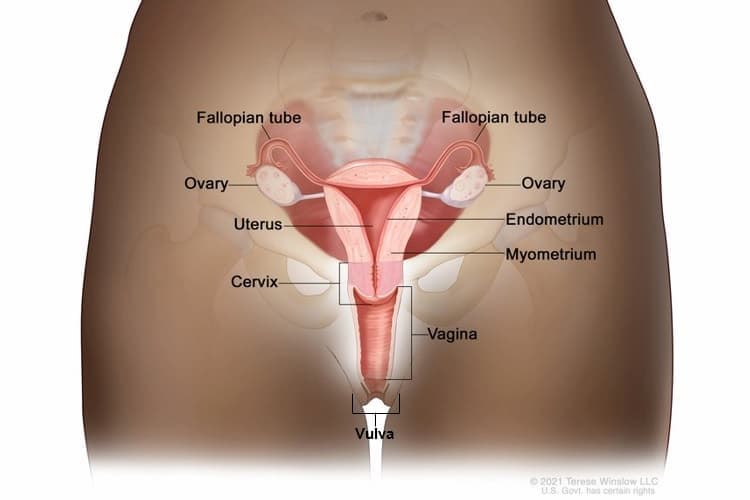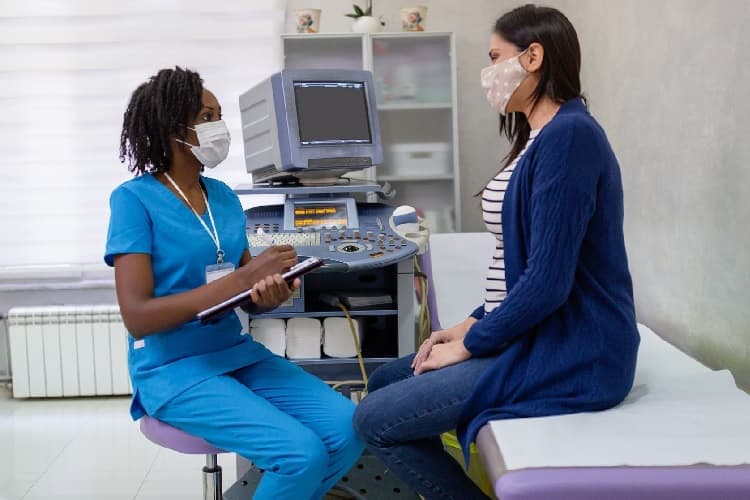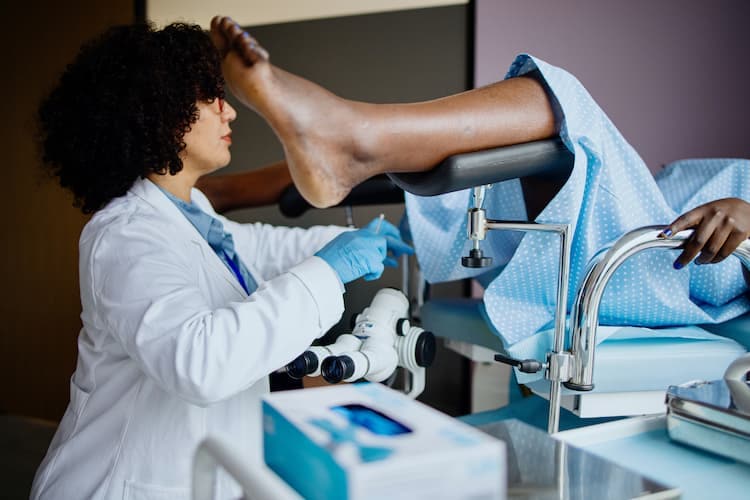Basic Information About Cervical Cancer

This diagram shows different parts of the female reproductive system.
© 2021 Terese Winslow LLC. U.S. Govt. has certain rights. Used with permission. Contact artist at www.teresewinslow.com for licensing.
Cancer is a disease in which cells in the body grow out of control. Cancer is always named for the part of the body where it starts, even if it spreads to other body parts later. When cancer starts in the cervix, it is called cervical cancer. The cervix connects the vagina (birth canal) to the upper part of the uterus. The uterus (or womb) is where a baby grows when during pregnancy.
Anyone with a cervix is at risk for cervical cancer. It occurs most often in people over age 30. Long-lasting infection with certain types of human papillomavirus (HPV) is the main cause of cervical cancer. HPV is a common virus that is passed from one person to another during sex. At least half of sexually active people will have HPV at some point in their lives, but few will get cervical cancer.
Screening tests and the HPV vaccine can help prevent cervical cancer. When cervical cancer is found early, it is highly treatable and associated with long survival and good quality of life.
Are you worried about the cost? CDC offers free or low-cost cervical cancer screening tests. Find out if you qualify.
Almost all cervical cancers are caused by HPV. Other things also can increase your risk of cervical cancer.
The most important things you can do to help prevent cervical cancer are to get vaccinated against HPV, have regular screening tests, and go back to the doctor if your screening test results are not normal.
Early on, cervical cancer may not cause signs and symptoms. Advanced cervical cancer may cause bleeding or discharge from the vagina that is not normal for you.
The HPV test and the Pap test (or Pap smear) can help prevent cervical cancer or find it early.
A Pap test result can be normal, unclear, abnormal, or unsatisfactory. An HPV test result can be positive or negative.
Cervical cancer is treated in several ways. It depends on the kind of cervical cancer and how far it has spread. Treatments include surgery, chemotherapy, and radiation therapy.





